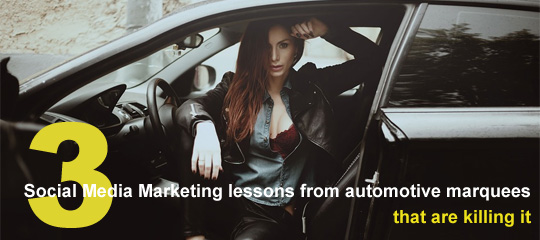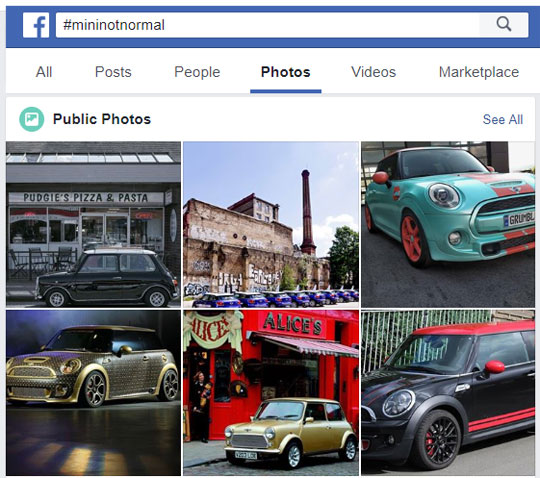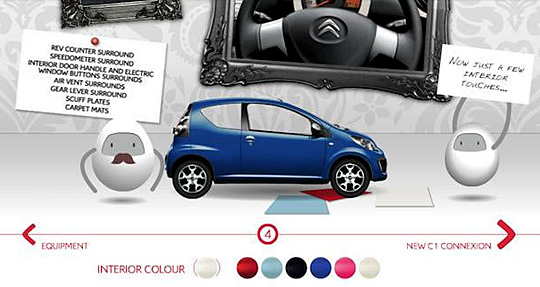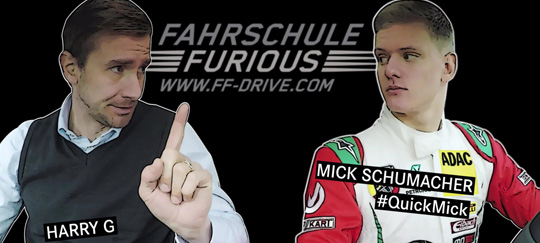Social media is such a versatile medium, allowing businesses to build audiences, forge relationships and drive sales in a myriad of different ways.
Cars are big investments and many car owners feel that their vehicles are a reflection of themselves. With such a close bond between person and product, social media is incredibly valuable for automotive marquees.
If a brand can tune in to this emotional appeal of sharing and self-expression through their marketing strategies, they can strike gold. So how can automotive players do this?
We’ve compiled a list of the top three social media marketing lessons to learn from companies who are nailing their social presence.
MINI’s Not Normal
The ‘NOT NORMAL’ campaign by MINI in 2014 saw the company win an abundance of industry awards, including the Chairman’s Award at the COOH Awards.
The ‘NOT NORMAL’ campaign encouraged people to post their own images online with the #mininotnormal hashtag. Back in 2013, user generated content was still relatively untapped and it was still relatively unusual to see a global brand hand a marketing campaign over to its audience.
Fundamentally, the campaign rested on creating a dialogue between firm and user, playing directly into the allure of user self-expression. Through the strategy, MINI connected with new audiences and helped define the brand as personable, innovative and, most importantly, fun!
Submissions were selected to be used in the campaign and rolled out incredibly quickly. In just a few hours, a submission could be displayed nationwide on digital posters. That immediacy helped reinforce the link between brand and customer. It was as if you were talking to a real person not a faceless brand.
In just six weeks, 230,000 people engaged with the campaign and shared 2,217 pieces of content. Approximately 30,000 new followers flocked to their Facebook page and 3,853 visited the campaign hub in search of a new MINI with over 10% turning into qualified sales.
Connecting to their audience by encouraging firm-user interaction was crucially effective for MINI.
Key Takeaway: There are several lessons we can take from MINI’s fantastic campaign but the most important is to create a dialogue between your customers and your brand. If it feels like you are talking at a potential customer rather than to a potential customer, you shouldn’t be surprised when they walk away.
Citroen’s You Like It We Make It
I put MINI’s campaign and Citroen’s campaign next to each other because the latter seems like a natural extension of the former. If MINI is all about engaging people at the ownership stage, Citroen is about engaging them at the design stage.
Well, sort of.
For their “You Like It We Make It” campaign, Citroen handed control to their fans, asking them to come up with their own design for the new C1 Connexion trim. Using a custom built car customisation tool, fans could tweak the base model then submit their creation to Citroen for review.
People love this sort of thing and Citroen’s audience reacted incredibly positively. Over the course of the campaign, fans submitted over 24,000 different designs with 13,500 new fans liking their page.
Relinquishing some power to excitable fans is a key lesson to take away from Citroen’s efforts. Fans seized the chance to let their imaginations run wild.
Key Takeaway: Usually a brand will develop a product, take it to market and then ask for feedback. Citroen brought that feedback stage forward and engaged fans much earlier on. By doing so, Citroen made those people part of the team and created a much stronger bond between the people and the brand.
Mercedes-Benz’s #QuickMick
Mercedes-Benz is a social media powerhouse, producing an average of 34 posts per day (compared to the average of 9) that generate almost 20,000 engagements.
But what is it that people like so much about these posts?
Mercedes-Benz has learned to use social media to be open. Whilst many automotive companies focus on how great a driving experience their cars offer, promoting idealistic lifestyles to bolster engagement with their brand, Mercedes-Benz focuses on harder-hitting narratives and topics that are relatable to the majority.
Their posts centre around environmental issues, stressing their commitment to reducing their carbon footprint. They take the bigger picture into account, establishing a relatable link to their audience who will ultimately seek out answers to these questions during their customer journey.
Mercedes-Benz teaches the valuable lesson that you need to be relatable to your audience. They strike an important balance between appealing to rational concerns and flaunting their more playful side.
Key Takeaway: When you’re sitting behind a keyboard, it’s easy to lose your humanity and present a company in a very robotic or dispassionate way — especially if you’re working to strict brand guidelines. Always remember that your marketing is designed to reach real people and they need something real and relatable to hold on to.
Wrapping Things Up
Looking at the social media strategy of these major automotive players teaches us some valuable lessons. Social media is a unique platform which helps knock down barriers between corporations and customers.
Embracing the platform’s flexibility to create a discussion, harness the audience’s creative resources, and speaking in a way that the audience can actually relate to, are incredibly important for automotive companies to incorporate into their social strategies.
If you think we’ve missed out any particularly impressive social campaigns from an automotive marquee, drop a comment below and let us know.
[Main image: Stockvault, Creative Commons CC0]
Tom Butcher is a freelance writer who recently escaped the world of print journalism. He covers a wide range of topics, including business, motoring and digital. He is currently working with LeaseFetcher to tell the world about car leasing.




